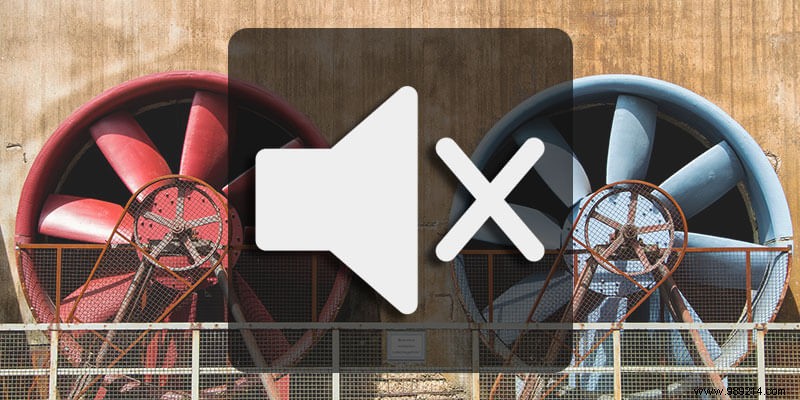Even if your PC doesn't look like a jet engine, a noisy computer isn't anyone's idea of a good time. Here's how you can fix your PC's issues that are causing excessive noise.
SummaryYour biggest fanClearing a pathShake, rattle and rollSilence at all costsConclusion:best betsThe loudest part of any PC is the fans. This includes the sounds the fans themselves make as they spin, the sound of moving air, and turbulence created by obstructions.

In most cases, you'll want to ingest air through the front of the PC and exhaust it out the back. Depending on your case configuration, there may be something dense like a hard drive tray in front of your inputs. This obstruction produces turbulent air, which is much noisier than smoothly flowing air. You probably can't remove all obstructions from the front of your machine, but do your best to limit them if possible.
Check for dust bunnies inside and outside your machine. If allowed, dust will accumulate and clog the air intakes, limiting the efficiency of your fans. This makes them spin faster, making more noise and picking up more dust. Dirty shop floors, pet hair and cigarette smoke make the problem worse.
Clean dust from your PC thoroughly, removing dust with a clean, lint-free cloth and diluted isopropyl alcohol. You can use compressed air on stubborn divots, but be careful to avoid spraying liquid droplets on sensitive components. Never use vacuum cleaners or cleaning solutions, or you risk destroying your PC.
Rare, loose, or improperly installed components can also produce noise. Because your entire case is vibrating at a low amplitude (a consequence of the spinning fans), this jolt is transmitted to whatever has a physical connection to the machine. The rattle has a distinctive humming sound and can be constant or intermittent.

Toolless drive bays are also a common source of noise, especially if not installed properly. In fact, any aging or loose component can produce noise. With your computer turned off, gently wiggle the components to see if they have much play. You can also try to immobilize a suspect component while hearing the noise. If the sound disappears, you have found the source.
Another noisy component are old-style spinning hard disk drives (HDDs). You can buy quieter hard drives, but you'll see better noise reduction with a high-capacity SSD with no moving parts.a
Sound deadening foam inserts can reduce audible noise from your machine, but they are not as effective at suppressing the source of the noise. They work best on high pitches, but rarely produce miracles.

In rare cases, inexpensive power supplies emit a high frequency whine or ringing called "coil whine". This is a high-pitched electronic buzz or squeal similar to the sound of cheap fluorescent lights. If you hear this sound, you can try to attenuate it. But the best thing to do is to replace your power supply with a better quality alternative.
If you want an absolutely silent machine, you will need to remove all moving parts, including the fans. With SSDs, it's easier than ever. But if you're going to have silence, then you need to build your PC with that goal in mind. A fanless system needs very low-power components and passive cooling, or it will overheat too quickly to be useful.
When you silence your PC, you'll get the most out of fan noise reduction by replacing noisy static fans with quiet PWM fans and clearing their cooling path of dust and obstructions. Beyond that, you'll need to apply a keen ear and a searching hand to locate the source and unwanted sounds.